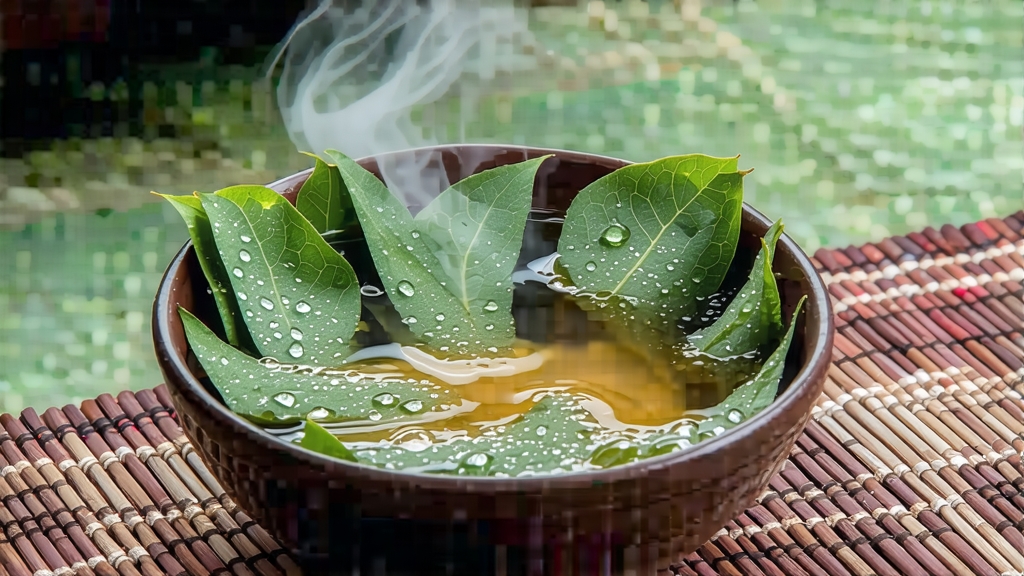
Tucked into the Tropic of Cancer, where the Philippine Sea’s warm breath collides with the Central Mountain Range of Taiwan, Alishan rises through three climate zones in a single morning. Between 1,000 and 1,400 metres above sea level, the mountain spends most of the year wrapped in a moving quilt of cloud. That floating moisture, the sharp diurnal swing of 10–15 °C, and the iron-rich lateritic soil conspire to slow the growth of tea bushes, thickening their cell walls and concentrating fragrant amino acids. The result is Alishan High-Mountain Oolong, a style that has re-defined what “green oolong” can taste like since the late 1970s.
Although tea plants reached Taiwan in the eighteenth century, Alishan’s tea story is surprisingly young. Until the 1970s the slopes were planted with cabbage, bamboo and betel-nut. Farmers switched to tea only after the government encouraged high-value crops and the newly built Alishan Forest Railway made it feasible to move delicate leaf down to the plains overnight. The first bushes came from Tung-ting (Frozen Summit) in Nantou, but the cooler nights of Alishan coaxed greener, more floral profiles from the same Qing Xin cultivar. Within a decade “Alishan” became shorthand for a bright, milky fragrance that reminded drinkers of mountain orchids and fresh whipped cream.
Farmers today still speak of “three clouds” that decide quality: the morning cloud that shades, the noon cloud that filters UV into soft gold, and the evening cloud that locks humidity around the leaf. Picking begins at dawn when the mountain is still dripping; two leaves and a bud are snapped, never cut, to keep the stem’s capillary channels intact. A top-grade garden will pluck only twenty kilograms of fresh leaf per mu (0.06 hectare), enough for five kilograms of finished tea after the long road of processing.
The craft follows the half-oxidised oolong protocol, but every step is tuned to altitude. Withering starts outdoors on bamboo trays set inside insect-net tents; the cool air extends moisture loss to eight hours, almost double the time common in lowland oolongs. Intermittent tossing—five to seven rounds—bruises the edges just enough to invite oxidation while preserving the jade centre. When the leaf emits a unmistakable pineapple-and-honey note, the team fires a charcoal wok at 230 °C, hand-tumbling the leaves for three minutes to arrest enzymes. A second, lower-temperature roast fixes the shape, then the leaf is wrapped in cotton cloth and rolled under mechanical pressure into the tight hemispheres known as “dragonfly head, toad tail.” The final bake is the master’s signature: some producers give only a whisper of 60 °C for two hours, preserving a pale-green infusion; others cycle through three charcoal roasts across six weeks, creating a deeper golden liquor with toasted almond notes.
To brew Alishan High-Mountain Oolong like a Taiwanese tea-maker, begin with spring water brought to 95 °C. Pre-warm a 120 ml gaiwan, then fill it one-third full with dry leaf—about five grams. The first pour, flash-rinse for five seconds, wakes the tightly curled pellets and rinses away the lightest charcoal dust. Immediately decant and inhale the lid: top grades release a scent likened to “mountain milk,” a lactic-floral aroma impossible to replicate below 800 metres.
Subsequent infusions lengthen by five-second increments: 30, 35, 40… The liquor glows like pale chardonnay and carries a viscosity that coats the tongue. Flavour unfolds in three acts: an opening snap of snap-pea sweetness, a mid-palate of orchid and honeydew, and a finish that leaves a cool, almost menthol breath in the throat. Good leaf will yield seven rounds before the aroma collapses; great leaf soldiers on to ten, each steep trading intensity for length.
Professional cuppers look for four markers. First, “high fragrance” lifted above the cup like morning mist. Second, “sweet throat,” the lingering moisture that makes you swallow again. Third, “rocky rhyme” (yan yun), a borrowed term from Wuyi cliff teas, here referring to a subtle mineral pulse from Alishan’s sandstone bedrock. Finally, “cloud legs”: the pale foam ring that clings to the